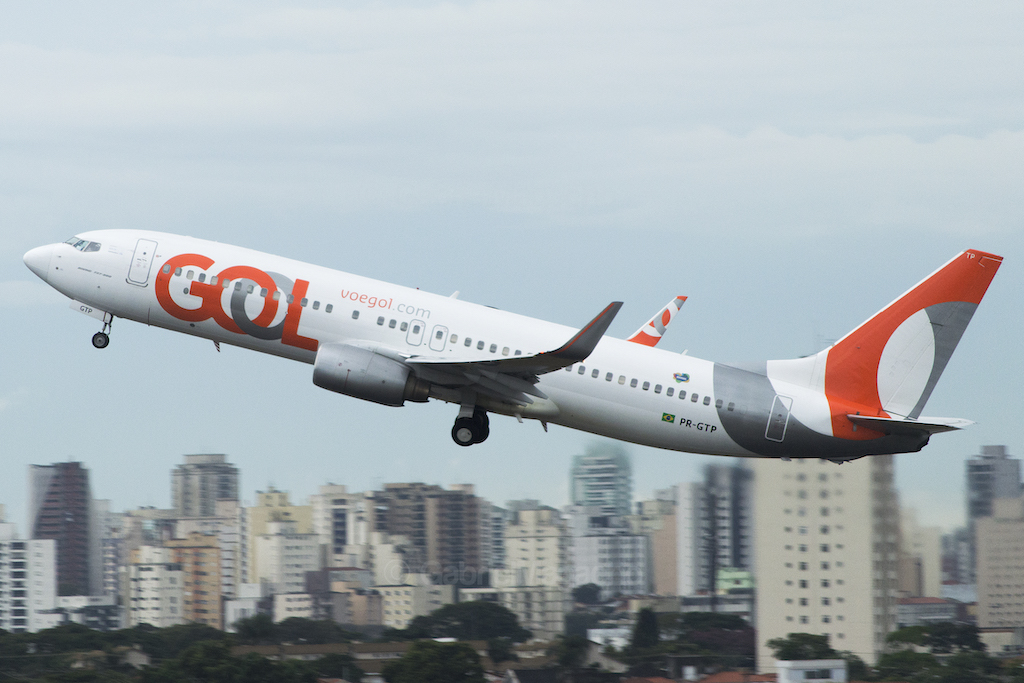Photo credit: Gol is taking the lead in regional consolidation. Flickr / gabrielmagacho
Gol is eager to move forward with its deal to acquire Map Transportes Aéreos, a move that CEO Paulo Kakinoff believes will put it at the forefront of consolidation in the airline industry spurred by the Covid-19 pandemic.
“I do believe this is [the] kind of trend created by the pandemic,” he told investors during a briefing marking the 17th anniversary of Gol’s listing on the New York Stock Exchange on Thursday. Gol “is about to reinforce, re-emphasize its role in promoting regional consolidation” with the Map deal, he added.
Kakinoff’s comments were in response to analyst questions on Gol’s view of another possible combination: A merger of Azul and Latam Brasil, which would create a clear domestic leader in Brazil. He declined to speculate on whether a deal could happen — most analysts believe Azul could make a move for the carrier through Latam Airlines Group’s U.S. Chapter 11 bankruptcy restructuring — saying it is one of “several” possible scenarios. However, Kakinoff believed that an Azul-Latam Brasil tie up could pass regulatory muster if it happened.
Gol’s 28 million reais ($5.7 million) deal for Map, while touted as a way to expand its regional reach, is seen as a play for more slots at sought-after São Paulo Congonhas airport. Map has the rights to up to 26 daily flights at Congonhas, which — if the deal is approved — would boost the Gol’s departures to up to 150 a day compared to 118 at Latam Brasil and 21 at Azul. The airline also says the acquisition will expand its presence in Manaus where Gol plans to replace Map’s ATR turboprops with Boeing 737-700 jets on regional routes.
Latin America’s three largest airlines — Aeromexico, Avianca and Latam — are all restructuring through the U.S. Chapter 11 bankruptcy protection process. All three expect to emerge smaller, which as in the case of Azul’s possible move for Latam Brasil, leaves them open to outside bids for some or all of their businesses. In addition, Amaszonas Uruguay and Tame Ecuador have closed their doors since the crisis began, and Mexico’s Interjet has suspended operations.
Already, Avianca closed its Peruvian operation ,where it was the second largest carrier after Latam Peru. And Latam has shut its Argentine operation, where it too was the second largest domestic carrier. Aeromexico has pruned its Boeing orderbook to just 20 737 Maxes from 54 prior to the crisis.
The International Air Transport Association (IATA) has placed the blame for these bankruptcies squarely in the laps of governments. Peter Cerda, the group’s regional vice president for the Americas, has repeatedly complained about lack of government support for Latin American carriers and warned that more airlines could collapse without any aid.
But as they say, necessity is the mother of invention, and the crisis has also created opportunity for new entrants. Startup Itapemirim Transportes Aéreos (ITA), backed by one of Brazil’s largest intercity bus companies, plans to begin flights on June 29. And in May, JetSmart CEO Estuardo Ortiz said that, even with the crisis, the ultra low-cost carrier saw ample opportunities to stimulate the market and expand in its Chile home, as well as in Argentina and Peru.
In Brazil, Gol — like Azul — has what could prove to be an overly optimistic view of the travel recovery. The airline expects the majority of Brazilian adults to receive a Covid-19 vaccine by the end of September, which conveniently is the start of the peak southern summer travel season. Currently, just 30 percent of Brazilians have at least one shot and the country recently passed the grim milestone of 500,000 deaths from the virus. Gol also expects domestic business travel to recover to pre-crisis levels by the first quarter of 2022, and grow by as much as 20 percent in 2023.
“Air travel is essential for the function of the Brazilian economy,” said Eduardo Bernardes, vice president of sales and marketing at Gol, on Thursday. He added that the business travel recovery forecast is predicated on the fact that much of the country lacks many transportation alternatives.
Gol is set to take delivery of 11 737 Maxes this year after becoming the first globally to resume flying the plane last December. Three of those aircraft have arrived with eight more due by the end of December, said Chief Financial Officer Richard Lark. He added that Gol has “flexibility” to adjust down its 95 outstanding commitments for the Max — 73 -8s and 22 -10s — if needed.
The airline plans to be flying most of its 2019 capacity in the second half of the year. International service to Caribbean destinations is expected to resume by December depending on border restrictions, said Gol Vice President of Operations Celso Ferrer. He did not provide a timeline for the resumption of U.S. flights.
Separately, Gol completed its acquisition of its Smiles loyalty program on schedule on June 23.
Special Offer: Choose From Quarterly or Annual Subscription Plans
{{monthly_count}} of {{monthly_limit}} free stories left to read
SubscribeAlready a member? Sign in here
You Need an Airline Weekly Susbcription to Read This Story
Your story count resets on {{monthly_reset}}
Already a member? Sign in here
